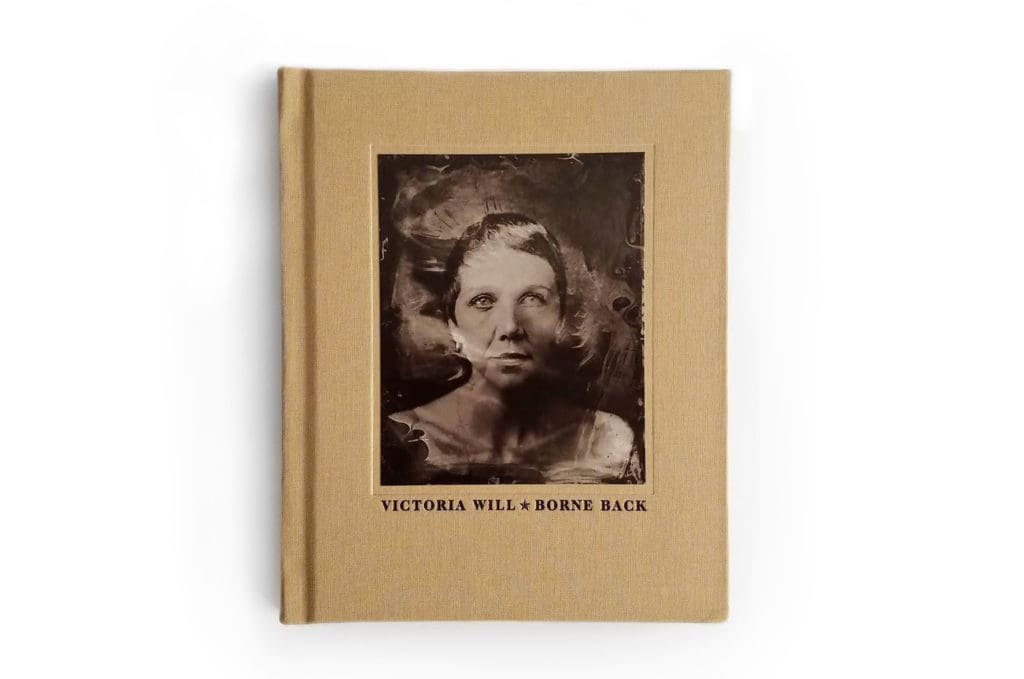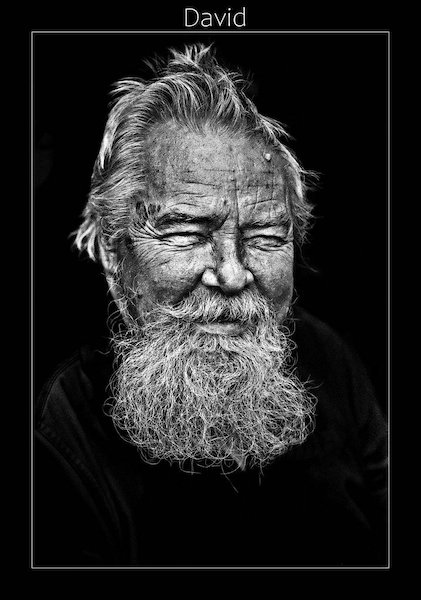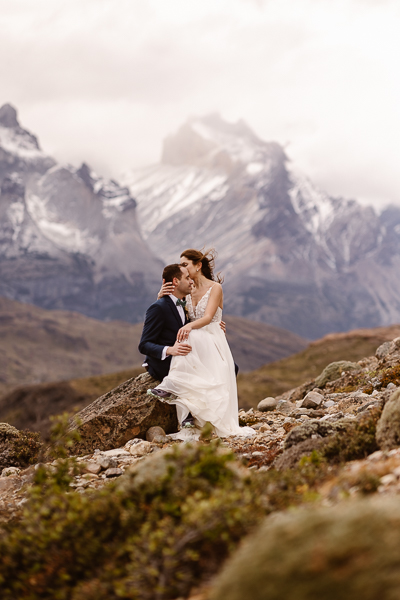Profiles
Victoria Will Came Out With a Book of Her Celebrity Tintypes
February 2, 2018
It wasn’t Victoria Will’s first rodeo when she began taking tintypes in one of Sundance’s many tiny portrait studios. The challenge had always been about making her space different: a chalk board to draw on one year, wild-looking backdrops the next, painted canvases that corresponded with people’s outfits the year after that. With 2013’s film festival done and over, Will wracked her brain for something new.
That fall, the New York-dwelling photographer wandered into Penumbra Foundation’s booth at Photoville in Brooklyn, where large-format photographer Lisa Elmaleh was taking tintypes of the festival-goers. Will sat in front of the 4 x 5 camera, intrigued when Elmaleh, wearing a headlamp, disappeared into a trailer and emerged with a developed wet plate. She handed Will the final product: a portrait that smelled like chemicals and looked like her in 1860.
Will researched how to shoot tintypes, ordered the chemicals online, and in 2014 and 2015, she set up a darkroom and shot tintype portraits of actors, directors and other creatives at Sundance. She used a strobe—it wasn’t exactly common for wet plates, but neither was having only three minutes or less with dozens of sitters for just one exposure each.
In 2016, she took a break from tintypes to instead create cinemagraphs of the talent, who by then grew so fond of her portraits that they asked if the Canon C300 she was using was in fact an 8 x 10 camera. In 2017, Will made Borne Back.
What was it like shooting at Sundance?
Victoria Will: Sundance sort of puts you in a box, and if you’re lucky, you have four walls and you make a photo studio. In 2014, I was still on assignment to take digital pictures, so I was adding the tintypes as an extra thing. I would say, “Oh, if you guys have time, I’d love for you to come back here and I’ll make a tintype.” People would walk in, smell the chemistry and say, “This is great, what are we doing here?” It was something different for them that didn’t have that same Groundhog Day feel of going from studio to studio shooting the same portraits. At the time, I hoped to walk away with ten plates—that to me was a successful adventure. But that first year, we made about 50.
How did the photo industry react?
VW: Well, what makes the tintypes interesting to me is the artifacts on them—the weird splotches and the swirls—but really, those are chemistry mistakes, so the tintype world was really up in arms. The guys who are purists thought my technique was terrible. I’m the photographer, so I’m communicating and directing the shoot, but I had a whole team of people helping me in the darkroom, mixing the chemistry and whatnot, but none of us were trained properly that first year. That’s what made it so magical though—we were in it for the love of it and were learning as we went. I wasn’t really affected by the criticism from the tintype community, first of all because it sparked a conversation about a medium that people weren’t really aware of, but also it’s so subjective. What I love about them some people don’t like. The tintypes you might be used to seeing are using just daylight, so they’re long exposures. I was in a very dark room where I didn’t have that opportunity, so I incorporated strobe, which made the exposure much more instantaneous.
And you went back to shoot tintypes for a second year, right?
VW: In 2015, I wanted to try it again, however I was 8-and-a-half months pregnant, so I couldn’t really do the chemistry. I brought in a team of amazing people from Penumbra who were willing to dive into the circus with me, and with their help, we made almost 150 plates. We were a machine. But you can definitely see a difference between the first and second years in the chemistry. Most of them have no mistakes. And it’s really interesting, I’ve been asked to be in a few exhibitions, and the plates that have the most unique chemistry marks are the ones that people seem to gravitate to most. And now, when people ask me to make tintypes on an assignment or on a particular project, they’ll say, “Please, mess them up, mess them up as much as possible,” and I’m like, “I can try to contaminate it, but there is an element of surprise that’s sort of that happy accident thing.”
How much direction were you giving?
VW: I only had the opportunity to push the shutter once with the tintypes, so I had to be very deliberate and articulate what I was looking for in a different way than with my digital pictures. I really had to dial in how I directed, and that sort of exercise changed the way I shoot my digital pictures now. I was surprised by that. A lot of these people are actors, so they liked to take on a persona for their tintype. I remember Maggie Gyllenhaal (on the book’s cover) said, “I’m thinking of being a Civil War widow,” because when she looked at the plates, that’s what she saw. And other people just really wanted to be comfortable. People would put their hands in a way that they could hold them.
What were some of their reactions?
VW: They gasped, because you do look different. You’re obviously unretouched. The tintypes can be very flattering, but they’re not forgiving, and most people embraced that. This particular group of people see themselves done up with hair and makeup and perfectly retouched in magazines all the time, so this was fun for them. I remember Kurt Russell saw his and couldn’t believe how much he looked like his grandfather.
Yes, tintypes are really transporting in that way.
VW: They are, there’s almost a story to them and to what the plate is picking up. If you have a few freckles on your face, they will really show because the UV light picks up the red, and you’ll see things that you don’t even really notice on a day-to-day basis. One of my favorite plates is Julianne Nicholson—she’s a redhead with stunning freckles. They sort of brought a richness and a depth to the image.
When did you decide to do the book?
VW: When I started this, I had never anticipated that it would become a book, but then once I had all the plates after 2015, I thought that it felt like a complete body of work and that it’d be fun to share it with more people, but I wasn’t actively looking or pitching it to publishers. I met David Carol before he and Ashly Stohl began Peanut Press, and we became good friends. They approached me in late 2015, and right away in just talking to David, he got my vision for it. I didn’t want it to be very large, I didn’t want it to be a big coffeetable book, because to me, the plates are really intimate. When you hold a plate, you turn it around and look at it in different light, see how the light reflects on them. There’s a 3D nature to them. The dilemma then became, how do you do that with a book? We spent about six months of trial and error printing. I was never rushed, it was never about meeting some hard deadline, it was just about getting it right. We just didn’t want it to be a book of photographs of tintypes, you know what I mean? So often I see tintypes and I know there’s a magic to them that they’ve lost. In the end, we came up with a formula that’s not grayscale because there are all these tones—a warmth, a cyan that needs to come out. I was so thrilled when I actually saw them bound and printed. That magic is definitely there.
How many portraits did you have to work with total?
VW: Oh, boy. Probably between 200 and 300. And I put them all in the hands of Elizabeth Avedon. David and Ashly know her, and I just asked if she’d be willing to help. I was having a really hard time making an edit, curating it in the right way, and Elizabeth graciously agreed. She sat with it for a long time, but what she presented to me was what I ended up going with.
Where did the title come from?
VW: I actually have to give my dad credit for that. He said, “Describe what a tintype is to me.” He knows, but he wanted to hear the elevator pitch. I said it was about bringing something from the past into the future, having a modern take on an old process. He immediately quoted The Great Gatsby: “So we beat on, boats against the current, borne back ceaselessly into the past.” Some people might think it means a rebirth, as in “born,” but “borne” is the past participle of “to bear” or “to carry,” and I thought that worked really well, that we’re carrying this into the future. Your past is such a part of your future, how it informs where you go, and as an artist, everything I’ve learned and experienced informs my art going forward.
Do you think you’ll ever pick up tintypes again?
VW: Absolutely. I took a little break, but I have been doing them again. I’m back. I don’t know how that’s going to go, but I just love getting my hands dirty. Lately, I’ve been doing tintypes of my children. I have a 2-and-a-half-year-old boy. Actually, the very last page of the book is a tintype I made of him.
Cameras: 1940s 4×5 Graflex Super D, Sinar P2 4×5
Lenses: 1860s Hermagis Petzval 203mm f/3.8, Wollensak Raptar 210mm f/4.5
Lighting: 4 Profoto Pro-8a or 4 Profoto D4 packs (9600 W/s total), beauty dish, 4-foot Octabank
Pre-Press: The Essential Step
“We had to decide how to incorporate a silver metallic ink into the printing without making it look gimmicky or cheap. The key was to mimic a tintype without the viewer focusing on the process before Victoria’s images. Joe Chanin—a pre-press manager with over 30 years of experience, a true expert—and Meridian Printing ran tests so we could confirm exactly the look we were going for on the actual paper with the actual inks. This way, when we printed the actual book, there were no surprises.” — David Carol, Peanut Press

Wise Words From Victoria Will
1. Sometimes, you just have to let it go. It’s really hard to decide when something’s finished. People have this idea that when you publish a body of work, it’s representing you and everything that you are, but by the time the book is printed, you’ve already evolved into something else, and so has your work. This is just one moment.
2. Don’t be afraid to ask for help. Turning to Elizabeth Avedon to get an objective point of view is the best thing I could have done. Whomever you pick needs to be someone who believes in your work.
Related: The Journey to Capturing 500 Portraits of Women Around the World
The Ever-Clever Olivia Locher’s Interesting Dance With Virality
\







